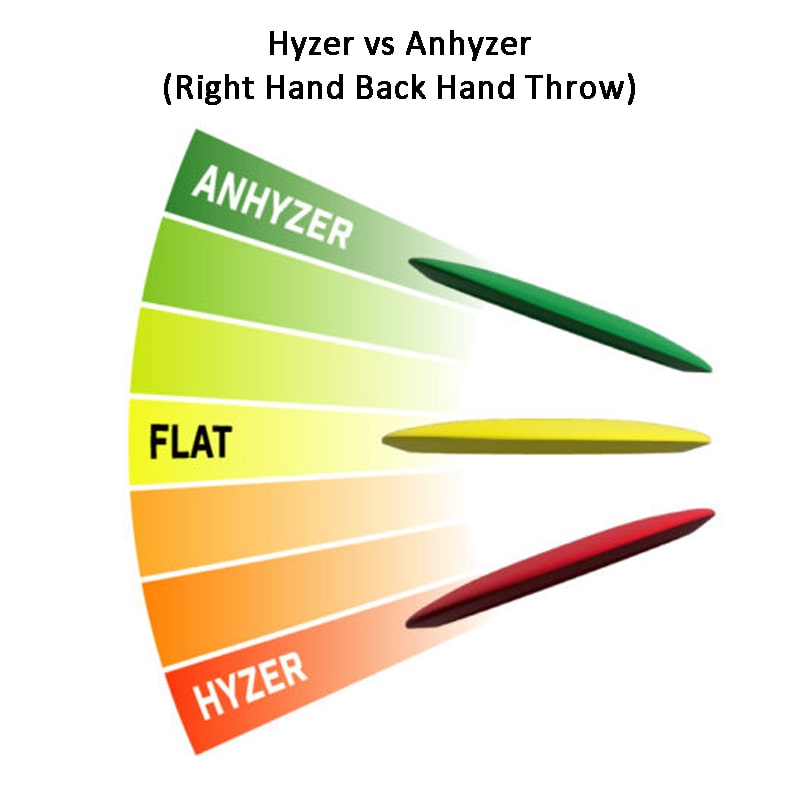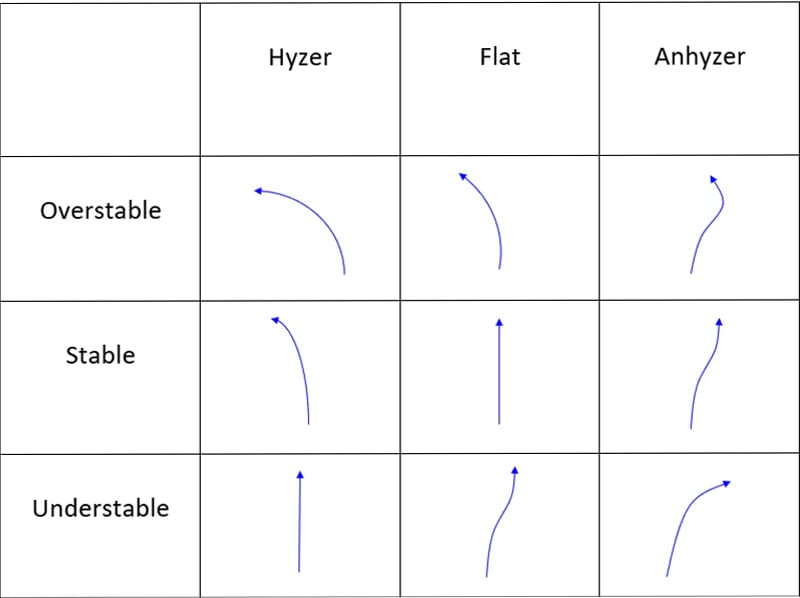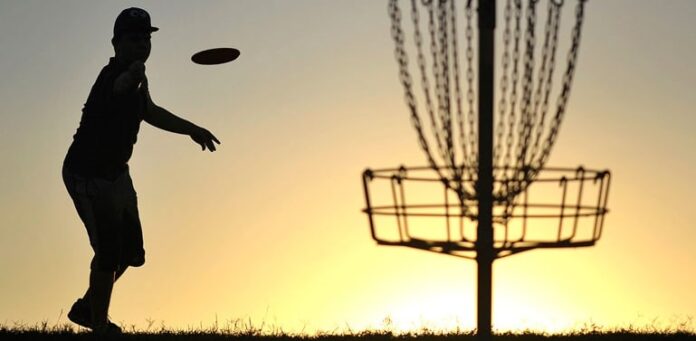Disc golf is a fast-growing sport. It combines golf’s precision with the fun of throwing discs. A key to mastering disc golf is knowing the throwing techniques. They can affect the disc’s flight path. Of these techniques, the hyzer vs anhyzer throws are key.
“Hyzer” and “anhyzer” refer to the disc’s release angle. It affects the disc’s flight path. These throws can greatly improve a player’s ability to adapt to different courses and conditions. This article will explore hyzer vs anhyzer throws. We’ll cover how to execute them and when to use each to improve your game.
Understanding the Basics
In disc golf, “hyzer” and “anhyzer” refer to the release angle of a disc, relative to the player’s body. These angles are crucial. They affect the disc’s flight path, direction, curve, and landing spot.
- Hyzer: A hyzer throw involves releasing the disc with the outer edge tilted downward. For a right-handed backhand (RHBH) throw, this angle causes the disc to initially travel to the left. The disc’s natural stability will often cause it to curve in that direction during flight.
- Anhyzer: An anhyzer throw requires the disc to be released with the outer edge tilted upward. For a RHBH throw, this release angle causes the disc to turn to the right. The disc’s stability and the throw’s power matter. The disc may keep turning or eventually fade back to the left.

The angle of release is just as important as the power and speed of the throw. It determines how the disc interacts with the wind and other environmental factors. Mastery of hyzer vs anhyzer throws allows players to manipulate the disc’s flight path. This gives greater control over distance and direction. Choosing between a hyzer and anhyzer throw can help. It can navigate obstacles, avoid hazards, and set up for the next throw.
Hyzer Throw
A hyzer throw is a key technique in disc golf. The disc is released with its outer edge tilted down. This release angle makes the disc curve. It’s useful for some course layouts and wind.
Technique and Grip
To execute a hyzer throw, a player needs to focus on the following:
- Grip: Use a comfortable grip that allows control and stability. A common grip for a backhand hyzer is the power grip. In it, all four fingers go under the disc’s rim. The thumb is on top for control.
- Stance: Lean slightly forward. Align your shoulders and hips to the target. Your feet should be shoulder-width apart to maintain balance throughout the throw.
- Release Angle: Tilt the outer edge of the disc downward at the point of release. For right-handed backhand (RHBH) players, angling the disc so that the left side is lower than the right.
- Follow Through: Follow through in the direction of the throw. Keep a downward angle to ensure the disc stays on its path.
Common Uses of Hyzer Throws
Hyzer throws are commonly used in the following scenarios:
- Navigating Obstacles: A hyzer throw can curve around obstacles on the right side of the fairway, staying to the left.
- Wind Conditions: A hyzer throw can be more stable in windy conditions, especially when the wind is coming from the left. The disc’s natural curve helps it cut through the wind without being pushed off course.
- Controlled Landing: Hyzer throws are more predictable. They land better, especially on precise approaches and putts.
Advantages and Situations of Using a Hyzer Throw
The hyzer throw’s main advantage is its predictability. Players can trust the consistent leftward curve of right-handed throws. It’s ideal for shaping shots around obstacles and for controlled approaches.
Anhyzer Throw
An anhyzer throw is a technique in disc golf where the disc is released with the outer edge tilted upward. This angle causes the disc to move opposite to a hyzer throw. It creates a rightward curve for right-handed backhand (RHBH) players. Mastering the anhyzer throw helps players tackle tough courses and make varied shots.
Technique and Grip
To perform an anhyzer throw, follow these steps:
- Grip: Use a grip that offers control and comfort. The power grip is also effective here, with fingers tucked under the rim and the thumb pressing down on top.
- Stance: Align your shoulders and hips to the target. Lean back a bit. Your feet should be positioned for stability, with a slight bend in the knees to maintain balance.
- Release Angle: Tilt the outer edge of the disc upward at the point of release. For RHBH players, this means angling the disc so that the right side is lower than the left.
- Follow Through: Follow through with your arm in the direction of the throw. Keep an upward angle to ensure the disc stays on its path.
Common Uses of Anhyzer Throws
Anhyzer throws are useful in various situations:
- Avoiding Obstacles: An anhyzer throw can curve the disc around obstacles on the left side of the fairway. It will bend to the right.
- Shaping Shots: Anhyzer throws are great for shaping shots around corners or over obstacles. They have a unique trajectory that other throws can’t achieve.
- Overstable Discs: For overstable discs, an anhyzer angle can help. It can extend the flight path and counteract the disc’s natural fade.
Advantages and Situations for Using an Anhyzer Throw
Anhyzer throws let players create unique flight paths. Hyzer throws cannot do this. This versatility helps in complex course layouts and tough recovery shots.
Comparing Hyzer vs Anhyzer Throws
Disc golfers must know the difference between hyzer vs anhyzer throws. It is key to improving their game. Both throws are basic techniques. They have unique flight paths and advantages. So, they suit different situations on the course.
Release Angle:
- Hyzer: The disc is released with the outer edge tilted downward, resulting in a leftward curve for RHBH throws.
- Anhyzer: The disc is released with the outer edge tilted upward, causing a rightward curve for RHBH throws.
Flight Path:
- Hyzer: A hyzer throw is known for its predictability. It has a stable, leftward trajectory. It can be relied upon in various conditions.
- Anhyzer: It offers a more versatile path. It curves to the right and allows for more creative shot-shaping.

Use Cases:
- Hyzer: It’s perfect for avoiding obstacles on the right, playing in the wind, and landing safely.
- Anhyzer: It helps avoid obstacles on the left. It can also curve shots to the right and extend the flight of overstable discs.
Deciding Which Throw to Use
Choosing between a hyzer vs anhyzer throw depends on the scenario on the course:
- Course Layout: Analyze the layout. Find the best throw to avoid obstacles and hit the fairway.
- Wind Conditions: The wind’s direction and strength can greatly affect the disc’s flight.
- Desired Flight Path: Decide if you need a hyzer or an anhyzer to hit your target. A hyzer is a predictable leftward curve. An anhyzer is a creative rightward curve.
By understanding these factors, players can make better decisions on the course. This will help them control the disc and improve their scores.
Conclusion
To excel in the course, any disc golfer must master both hyzer and anhyzer throws. They are key to improving their skills and adaptability. The player must also know the key differences between hyzer vs anhyzer throws. As each throw has unique benefits and suits different situations. It helps players navigate complex layouts and make precise shots. By practicing these techniques and trying different discs and release angles, players can become more versatile and strategic. Embrace the challenge of learning these throws. It will boost your confidence and creativity in tackling any course.







